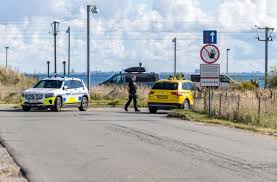Innovations at Copenhagen Airport: The Rise of Drones

Introduction
The use of drones in airports is rapidly becoming a pivotal innovation in the aviation sector. As air travel continues to evolve, integrating drone technology is essential not only for improving operational efficiency but also for enhancing passenger safety and convenience. Copenhagen Airport (CPH), Denmark’s largest and most significant air transport hub, has recently taken steps to incorporate drones into its operations, marking a significant development in the industry’s trajectory.
The Role of Drones at Copenhagen Airport
Copenhagen Airport has pioneered the use of drones for various tasks, ranging from infrastructure inspections to logistical support. In particular, the airport is deploying drones to monitor runway conditions, assess the integrity of terminals, and provide real-time data to ground control teams. This initiative enables faster and more thorough inspections that were previously reliant on manual methods, enhancing safety and operational efficiency.
Recent Developments
In late September 2023, Copenhagen Airport announced a successful trial of drone deliveries, which showcased its potential for transporting essential medical supplies and other urgent items between terminals and adjacent medical facilities. This trial was part of a broader initiative aiming to explore how drones can reduce ground congestion and speed up service time for critical deliveries. According to airport officials, the trial was successful, with a 95% accuracy in delivery points and a significant reduction in transportation time compared to traditional methods.
Regulatory Considerations
As drones become increasingly integrated into airport operations, regulatory aspects are coming to the forefront. The Danish Transport Authority is currently reviewing and adjusting regulations to ensure safe drone operations within controlled airspace. This includes measures on air traffic management, drone registration, and pilot certification. Copenhagen Airport’s proactive approach in collaboration with regulators is setting a benchmark for other airports looking to incorporate similar technologies.
Conclusion
As Copenhagen Airport continues to push the boundaries of drone technology, it is positioned as a leader in the aviation sector’s future. With successful trials and ongoing regulatory collaborations, the airport signifies a paradigm shift in how aviation operations might function in the years to come. For passengers and industry stakeholders alike, innovations like these promise not only to enhance safety and efficiency but also to pave the way for a more integrated and technologically advanced travel experience.









